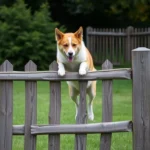
Dogs thrive on mental stimulation just as much as they do on physical exercise. Engaging your furry friend’s mind can prevent boredom, reduce destructive behaviors, and enhance your bond. One of the best ways to provide this stimulation is through puzzle toys. These interactive toys challenge dogs to think and problem-solve, keeping them entertained for hours. But how do you get your dog interested in these engaging toys? Here’s a detailed guide to help you on this journey.
Understanding Puzzle Toys
What Are Puzzle Toys?
Puzzle toys are specially designed toys that require dogs to engage with them to receive a reward—typically treats or food. They come in various forms, such as treat-dispensing balls, sliding puzzles, and interactive games where dogs must figure out how to unlock compartments. By engaging with these toys, dogs not only get a tasty reward but also exercise their cognitive abilities.
Some popular examples include:
- KONG Classic: A durable rubber toy that can be stuffed with treats or peanut butter.
- Outward Hound Hide-A-Squirrel Puzzle Toy: A plush puzzle where dogs can extract squeaky toys hidden inside a larger toy.
- Nina Ottosson Dog Twister: A complex puzzle requiring dogs to slide blocks to uncover treats.
Benefits of Puzzle Toys
The benefits of puzzle toys extend beyond simple entertainment. Here are some key advantages:
- Mental Stimulation: These toys challenge dogs to think critically, enhancing their cognitive development.
- Boredom Reduction: Dogs left alone without adequate stimulation can develop destructive behaviors. Puzzle toys provide an engaging distraction.
- Bonding Opportunities: Playing with puzzle toys allows for interactive play between you and your dog, strengthening your relationship.
Assessing Your Dog’s Interest
Recognizing Your Dog’s Personality
Understanding your dog’s personality is crucial when introducing puzzle toys. Different breeds and temperaments have varied responses to toys. For instance, herding breeds like Border Collies may be more inclined to engage with complex puzzles, while breeds like Bulldogs may prefer simpler toys.
Look for signs that your dog enjoys play:
- They show enthusiasm when you bring out a toy.
- They wag their tail or bark excitedly.
- They engage with toys for extended periods without losing interest.
Evaluating Current Engagement Levels
Before introducing puzzle toys, observe how your dog interacts with their current toys. This evaluation can provide insights into their preferences for treats, textures, and challenges.
Consider the following:
- Does your dog prefer soft toys or hard toys?
- Are they more attracted to squeaky toys or chewable ones?
- How do they respond to interactive toys versus solitary play?
Understanding these preferences will help you choose the right puzzle toy that resonates with your dog.
Introducing Puzzle Toys to Your Dog
Choosing the Right Puzzle Toy
Not all puzzle toys are created equal. When selecting one, consider the following factors:
- Size: Ensure the toy is appropriate for your dog’s size to prevent choking hazards.
- Difficulty Level: Start with beginner-friendly toys to prevent frustration. Gradually increase the difficulty as your dog becomes more adept.
- Material: Choose durable materials that can withstand chewing, especially for aggressive chewers.
Some great beginner-friendly options include the KONG Classic and simple treat-dispensing balls.
Initial Introduction Techniques
To successfully introduce your dog to puzzle toys, follow these steps:
- Familiarization: Allow your dog to explore the toy without any treats inside. Let them sniff and investigate.
- Introduce Treats: Place a few of your dog’s favorite treats inside the toy or attach them to the outside. This creates a positive association.
- Encourage Interaction: Gently encourage your dog to interact with the toy. Use a commanding voice like “Go get it!” to spur them on.
- Supervised Play: Keep an eye on your dog as they play, especially with new toys. This ensures they stay safe and can help you gauge their interest level.
Encouraging Continued Engagement
Making Puzzle Toys More Appealing
To keep your dog engaged with puzzle toys, consider these tips:
- Stuff with Favorite Treats: Use a variety of treats, such as kibble, peanut butter, or special dog treats. The more enticing the reward, the more likely your dog will engage with the toy.
- Rotate Toys: Dogs can lose interest in toys quickly. Rotating their puzzle toys weekly keeps things fresh and exciting, maintaining their interest.
Creating a Positive Association
Positive reinforcement is a powerful tool in training and engaging your dog. Here’s how to create a positive association with puzzle toys:
- Praise and Rewards: Whenever your dog interacts with the toy, offer verbal praise and petting. This reinforces the behavior and encourages them to continue.
- Timing of Play Sessions: Pay attention to your dog’s energy levels. Schedule puzzle play during high-energy times, such as after a walk, to maximize their engagement.
Troubleshooting Common Challenges
Dog Shows No Interest
If your dog appears uninterested in puzzle toys, analyze the situation:
- Difficulty Level: The puzzle may be too challenging for your dog. Start with simpler toys and gradually introduce more complex ones.
- Alternative Engagement: Consider interactive play with you using the toy to demonstrate its purpose. This can spark interest.
Frustration with the Puzzle Toy
Some dogs may show signs of frustration when faced with a puzzle that is too difficult. Signs include whining, pawing, or abandoning the toy. Here’s how to help:
- Adjust Difficulty: If your dog seems frustrated, simplify the challenge. Remove some barriers or make the rewards easier to access.
- Encourage Persistence: If your dog is struggling, encourage them gently. Sometimes a little patience goes a long way in helping them figure it out.
Incorporating Puzzle Toys into Training
Using Puzzle Toys for Behavioral Training
Puzzle toys can be effectively integrated into your dog’s training routines. Here’s how:
- Positive Reinforcement: Use the toys as a reward during training sessions. For instance, after a successful sit or stay command, allow your dog to play with their puzzle toy.
- Engagement During Downtime: When you’re busy, providing a puzzle toy keeps your dog occupied, reinforcing good behavior through distraction.
Encouraging Problem-Solving Skills
Puzzle toys are excellent for developing your dog’s problem-solving skills. Choose puzzles that require them to figure out how to access treats.
Here are a few examples:
- Sliding Puzzles: Toys like the Nina Ottosson Dog Twister require dogs to slide pieces to access hidden treats, promoting logical thinking.
- Hide-and-Seek Toys: Toys that have smaller toys hidden inside larger ones encourage dogs to figure out how to extract them, enhancing their problem-solving abilities.
Conclusion
Engaging your dog with puzzle toys is an effective way to provide mental stimulation, reduce boredom, and strengthen your bond. From selecting the right toy to troubleshooting common challenges, there are many strategies to ensure your dog remains interested and engaged. Experiment with different toys, techniques, and treat combinations to find what resonates best with your furry friend.
Remember, patience and consistency are key. Every dog is unique, and what works for one may not work for another. Enjoy the process of discovering the joys of puzzle play with your dog!
This comprehensive guide serves as a resource for dog owners looking to tap into the benefits of puzzle toys for their pets, ensuring they remain engaged, happy, and mentally stimulated.









